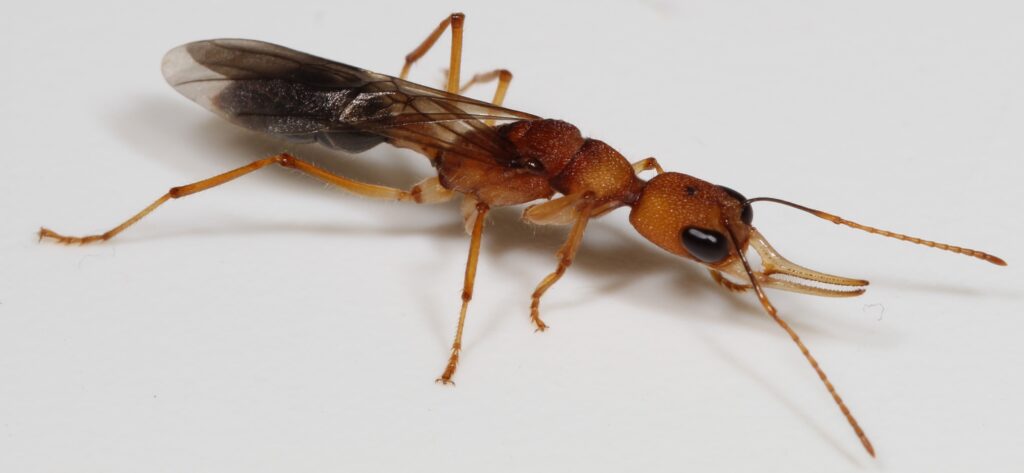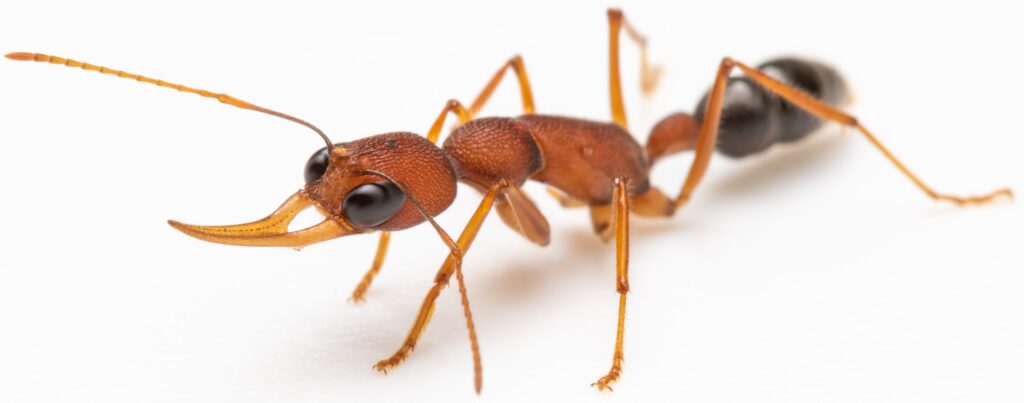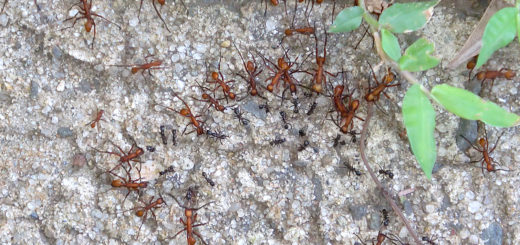Moving beyond Drosophila – Jumping ants as a model species in research on gene regulation.
Olfaction is essential for complex social behavior in insects. To discriminate complex social cues, ants evolved an expanded number of odorant receptors (Or) genes strategically located in the antennae. Mutations in the obligate odorant co-receptor gene orco lead to the loss of ~80% of the antennal lobe glomeruli in the jumping ant Harpegnathos saltator. However, till this point the cellular mechanism remains mostly unknown, but the authors demonstrate massive apoptosis (non-necrotic cell destruction) of odorant receptor neurons (ORNs) during pupal development in the absence of Orco. Their detailed research methodology and findings are presented in a comprehensive overview of ORN development and Or expression in H. saltator which could lead to a bright future for such studies regarding future studies in ants and other social insects.
In this interview, Hua Yan, Bogdan Sieriebriennikov and Kayli Sieber highlight the key points of their paper published in Science, “Orco-dependent survival of odorant receptor neurons in ants“, and answer some questions.



Edited by James Trager and Salvatore Brunetti


MNB: Could you tell us a bit about yourself?
HY: I worked on fly genetics for my PhD. Drosophila is a great model system to study fundamental principles of biology. However, it has limitations, e.g. no sociality. To understand mechanisms of social behavior, I focused on several lines of ant research, including genetic manipulations, olfactory neural development, phenotypic plasticity and longevity.
BS: I have previously worked with worms that are genetically identical but can develop into either predators or benign microbe feeders depending on their environment. Naturally, I became interested in social insects because they can also develop into vastly different individuals despite sharing the genotype. This led me to studying odour because it is just so important in the life of ants.
KS: Before starting as a PhD student in Hua Yan’s lab, I worked with insects that exhibited unique male-male competitive courtship behavior. I was particularly interested in how nutrition could impact their success from hatching to eventual reproductive maturation. An interest in unusual insect behavior and a desire to pursue more intricate genetic studies led me to develop an interest in the complex nature of ant societies, including their olfactory-mediated social behavior and development.

MNB: Could you briefly outline your research on “Orco-dependent survival of odorant receptor neurons in ants” published in Science Advance in layman’s terms?
BS: From Hua’s previous work, we knew that if you remove Orco, a protein that is necessary for the insects’ sense of odour, ants lose their ability to perform any social functions. Unexpectedly, the antennae (the “nose”) of such ants were almost empty inside, meaning that nervous cells that sense odour were gone. In the well-studied fruit flies, Orco is only needed for the function of odor-sensing cells, not for their survival, so this was puzzling to us. In the present study, we show that without Orco, the odor-sensing cells first develop normally, but then there is a specific time point when they start dying in massive amounts. This coincides with the time when the cells start making odour receptors, which are proteins that directly bind to odour molecules, allowing cells to sense their presence. We believe that without Orco, cells cannot put these receptors in the right place, so the receptors clog up the cell and kill it. We still do not understand why this happens in ants (and maybe other social insects?) but not in flies, so there is plenty to explore in the future.
MNB: What is the take-home message of your work?
KS: Olfaction is an important tool in animal communication and behavior, and even humans rely on it to an extent, whether or not we realize this on a day-by-day basis. However, a functional olfactory system may be essential for more than just guiding animal behavior; our data presents an example where olfactory dysfunction results in pronounced abnormal development and even neuronal death. The absence of key components required for proper sensory system functionality (such as Orco) can result in negative developmental consequences that will impact the success and survival of the adult animal.
MNB: What was your motivation for this study?
HY: Gene duplications led to novel developmental processes during evolution. Ants have evolved a large number of odorant receptor (Or) genes due to high rates of gene duplications. Previously we found that loss of Orco leads to defective neural development, the phenotype only found in ants and bees with expanded Or genes, but not in many solitary insects, such as Drosophila. We aimed to understand how gene duplications led to unique developmental processes that facilitated the evolution of sociality.

MNB: What was the biggest obstacle you had to overcome in this project?
BS: Single-cell and single-nucleus RNA sequencing technologies have become widespread recently, but it was very difficult to apply these techniques to ant antennae: the antennae are encased in tough cuticle, which damages underlying cells during tissue dissociation and contaminates the sample with debris. Luckily, Olena Kolumba, who was working with me on this problem and who is one of the paper’s authors, managed to establish a protocol that worked for us! We also received some useful tips from researchers from a friendly lab who study mosquito antennae.
MNB: Do you have any tips for others who are interested in doing related research?
KS: Genetic research in ants can be complicated for a number of reasons, namely that they are not well-established model organisms (compared to, for example, fruit flies). This can lead to challenges in developing and adapting techniques from common model species and applying them to ant studies. I would advise others to be open-minded and try different strategies to achieve their goals, and not be overly frustrated if troubleshooting and optimization take more time than expected. Ants are complicated organisms, making them fascinating subjects of research, but also resulting in unique challenges to overcome.
MNB: Where do you see the future for this particular field of ant research?
HY: With more powerful genetic, genomic and epigenetic tools, scientists will look into each step of olfactory development, including progenitor cell division, gene expression regulation and neural circuit assembly. Beyond the peripheral system, scientists will further explore how the central nervous system evolved to facilitate social behavior.





Recent Comments